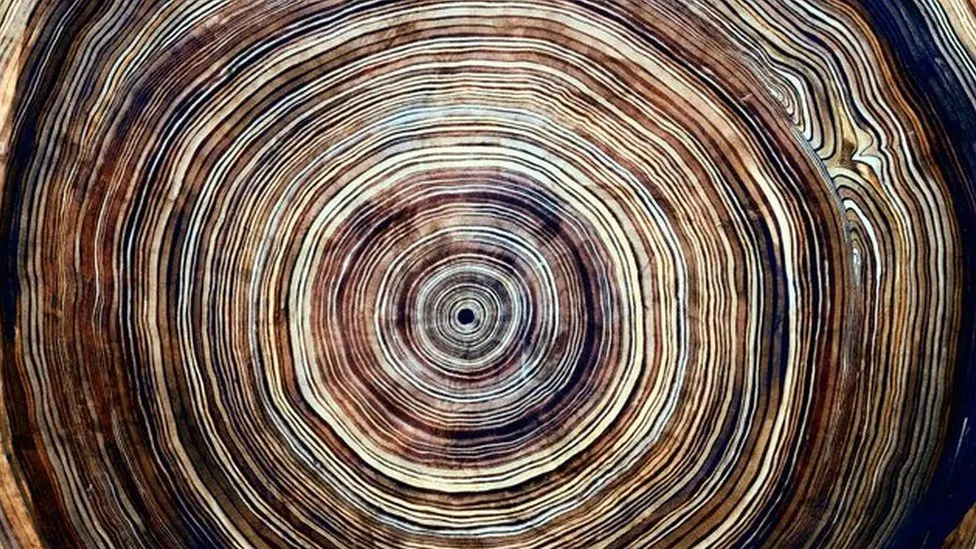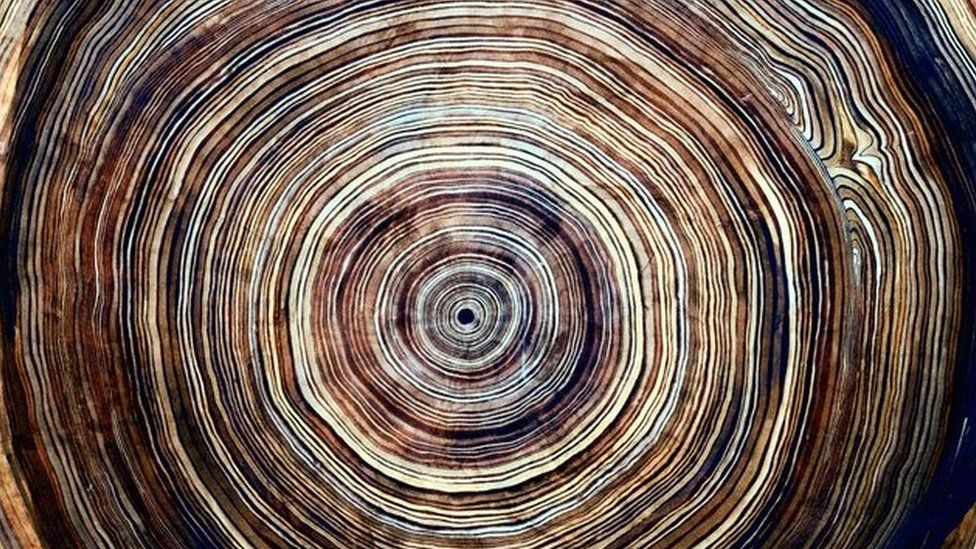
A Miyake event is an observed sharp enhancement of the production of cosmogenic isotopes by cosmic rays. It can be marked by a spike in the concentration of radioactive carbon isotope
C in tree rings, as well as
Be and
Cl in ice cores, which are all independently dated. At present, five significant events are known (7176 BCE, 5259 BCE, 660 BCE, 774 CE, 993 CE) for which the spike in
C is quite remarkable, i.e. above 1% rise over a period of 2 years, and four more events (12,350 BCE,[1] 5410 BCE, 1052 CE, 1279 CE) need independent confirmation. It is not known how often Miyake events occur, but from the presently available data it is estimated that such an event would occur once every 400–2400 years.
There is strong evidence that Miyake events are caused by extreme solar particle events. and they are likely related to super-flares discovered on solar-like stars Although the Miyake events are based on extreme year-to-year rises of
C concentration, the duration of the periods over which the
C levels increase or stay at high levels are longer than one year. However, a universal cause and origin of all the events is not yet established in the scientific field, and some of these events may be the result of different phenomena coming from the outer space (such as a Gamma-ray burst).
A recently reported sharp spike in 14
C that occurred between 12,350 and 12,349 BCE, may represent the largest known Miyake event. This event was identified during a study conducted by an international team of researchers who measured radiocarbon levels in ancient trees recovered from the eroded banks of the Drouzet River, near Gap, France, in the Southern French Alps. According to the initial study the new event is roughly twice the size of the Δ14
C increase for more recent 774 CE and 993 CE events, but the strength of the corresponding solar storm is not yet assessed. However, the newly discovered 12,350 BCE event has not yet been independently confirmed in any other wood from other regions, nor it is reliably supported by a clear corresponding spike in other isotopes (such as Beryllium-10) that are usually used in combination for absolute radiometric dating.
A Miyake event occurring in modern conditions might have significant impacts on global technological infrastructure such as satellites, telecommunications, and power grids.[7][12][13]
Discovery
The events are named after the Japanese physicist Fusa Miyake who, as a doctoral student, was the first one to identify these radiocarbon spikes and published the results with co-authors in 2012 in the journal Nature.The investigation at that time found a strong
C increase in the annual rings of Japanese cedars for the years 774/775. The event of 775 was independently discovered, using the low-resolution IntCal data. In 2013, Miyake and co-authors published the discovery of another, similar radiocarbon spike in the years 993/994. In December 2013, Miyake received her Doctor of Science degree from Nagoya University.
Time benchmark
After a Miyake event is well-studied and confirmed, it can serve as a reference time benchmark, a “year-stamp”, enabling more precise dating of historical events. Six diverse historical occurrences, from archaeological sites to natural disasters, have thus been dated to a specific year, using Miyake events as benchmarks and counting tree rings.[18] For example, wooden houses in the Viking site at L’Anse aux Meadows in Newfoundland were dated by finding the 993 CE Miyake event and then counting tree rings, which showed that the wood is from a tree felled in 1021 CE. https://en.wikipedia.org/wiki/Miyake_event
The Miyake Event: A Cosmic Warning Sign for Earth?
Beneath the Sun’s gentle gaze lies a dark secret, a hidden scar etched across time. The Miyake Event, a colossal cosmic storm of unknown origin, left its mark on Earth thousands of years ago, detectable only in the whispers of ancient trees and the echoes of disrupted ice cores. But what caused this cataclysm, and more importantly, could it happen again?
Miyake Event: Trees help scientists identify ‘biggest’ solar storm
-
Published
-
comments

The list of benefits we get from trees is certainly a long one, from storing carbon to reducing the risk of flooding – but did you know they can tell us a lot about the past too?
Ancient tree rings have helped researchers identify the biggest known solar storm in history, when the sun emits huge bursts of energy.
According to analysis of the tree rings in the French Alps, the storm happened some more than 14,000 years ago.
Experts say if a similar storm happened today it could wipe out satellite systems and cause blackouts, costing billions of pounds. https://www.bbc.co.uk/newsround/67074940
What The Next Miyake Event Will Do To Our Planet
A Miyake event is an unexplained cosmic storm that strikes our planet on average about every thousand years. These events leave their imprint in the tree rings around the globe and the ice cores of Antarctica. Scientists study the spike in the radiocarbon levels in the tree ring data to find the exact time a Miyake event occurred. It was believed that their origins lie in solar flares that regularly hit Earth. However, new studies show the Sun is not responsible for these cosmic storms.
The 46th episode of the Sunday Discovery Series explains the mystery of the Miyake events in detail.
All Episodes Of The Series: https://bit.ly/369kG4p
Basics of Astrophysics series: https://bit.ly/3xII54M
